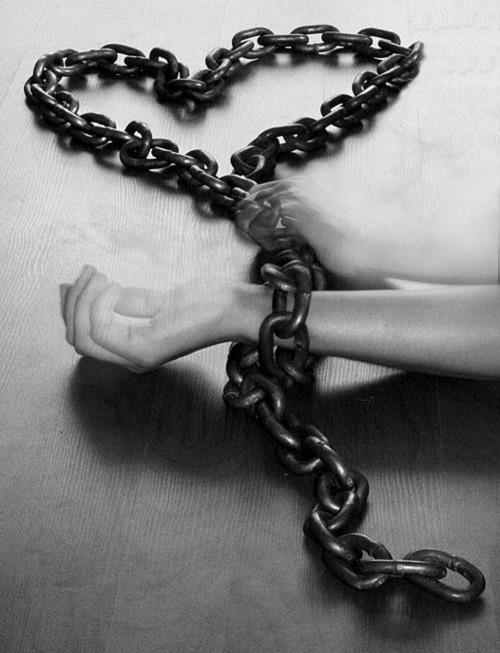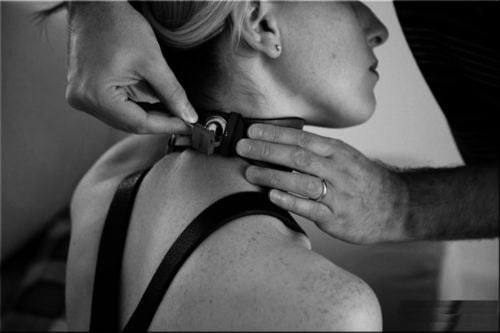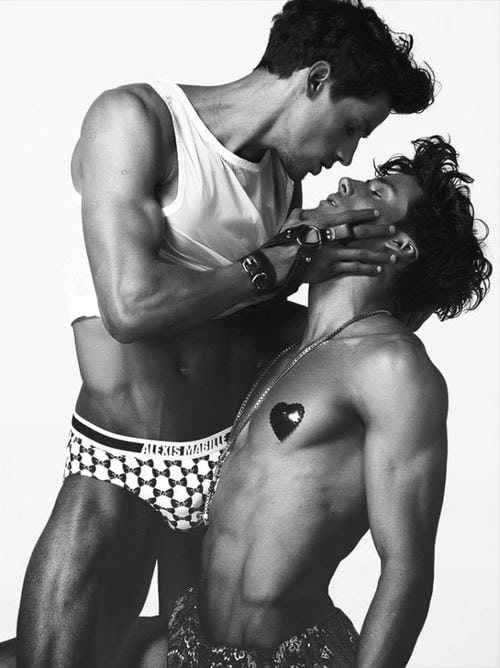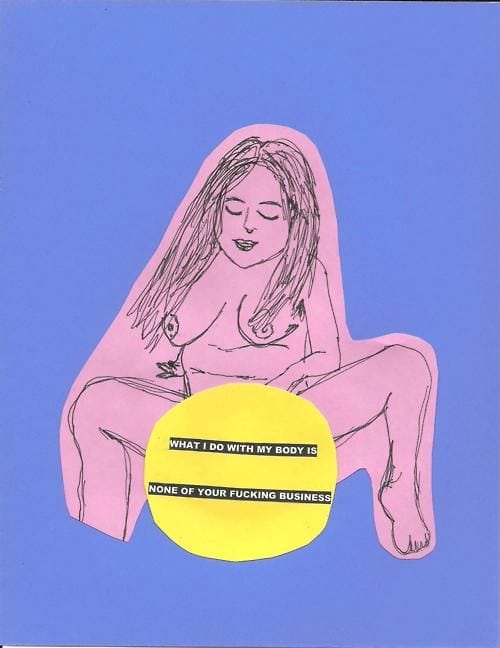If you’re like me, then the thought of being tied up, whipped, gagged, chained, flogged, and “forced” to have sex, is super exciting. It makes you horny. It makes you wet. It makes you hard. It makes you ready to throw caution to the wind and go all out.
“Buy ALL the BDSM things!” You say to yourself as you peruse your local kinky sex shop.
BUT… Hold up there! Just a second now!
In order to actually have fun and feel comfortable with BDSM, you need to follow certain safety protocol. When you’re not in the sexy space, it’s easy to be nonchalant about BDSM safety, especially if you’re with a long-time partner, friend with benefits, or other person that you trust. But, we’ve all had the type of mindblowing sex where you get totally caught up in the moment and you lose track of time. That’s great and I wish everyone that kind of sex, but when it comes to BDSM, safety is crucial because it’s easy to go in too far when you’re in that space, and then get either emotionally or physically hurt.
I’m determined to help you make your BDSM practice as fun and SAFE as possible, so without further ado, let’s talk about the safety aspects you should incorporate into every play session. (Note that this is meant to be a basic BDSM safety guide, in that, I won’t be talking about safety with every single BDSM practice.)
Includes:
Physical Safety | Setting Limits | Safe Words | Check Ins
Gag Safety | Spanking, Paddling, & Flogging | Bondage & Restraint
Emotional Safety | Aftercare
Physical Safety
If you’re a BDSM newbie, take a look at various types of BDSM play scenarios and actions that you might be interested in trying. I highly recommend downloading one of these BDSM checklists that you can go through with your partner (or even by yourself) to see what kinds of things turn you on, feel safe, AND what kinds of things you’re totally not into at all. The point in doing this is that even if you’re with a partner and they’re absolutely all about getting you to do breast bondage and you’re unsure about it, that you are informed enough about what YOU want to say, absolutely No! or Yes!

Setting Limits
Just like we set physical and emotional boundaries in our non-sexual lives, it’s also super important to set limits in BDSM. In this type of play, we decide on both hard limits AND soft limits. While these limits are not set in stone and can change as you get more comfortable with play, it’s important to have them as you’re going into any BDSM encounter so that both you and your partner know what’s ok and what’s off limits. It’s important that BOTH of you have these limits, too. For example, if the Dom in your relationship absolutely refuses to tie you up and fuck you in public, then that’s a limit for him/her that should be respected. OR if, as a Sub, your Dom really wants to lead you around with a collar on your hands and knees, then they have to be okay if you’re not into that.
But how do you decide what your hard and soft limits are? First off, knowing the difference between soft and hard when they come to limits is important. Cassandra Carr, defines them well here:
“Soft limits: A limit which is not necessarily set in stone. It may be flexible, may be pushed or may change over time and/or with experience or knowledge of that type of play.”
“Hard Limits: What someone absolutely will not do, usually non-negotiable (may or may not be subject to change over time).”
How about any good examples? Well, the checklist I linked to above is the greatest thing because, honestly, hard and soft limits are different for everyone! That’s why looking at all the various types of play is important because then the power is in YOUR hands to decide what you do or don’t want to do now, and maybe a year or ten down the road!

Safe Words
Safe words are ridiculously important to have for the very same reason I mentioned earlier. When you’re in the moment and it feels like you can’t stop, you CAN with the right safe word.
Safe words come in handy for a variety of reasons… Maybe you’re new at this and are thinking that bondage sounds SUPER fun, but then you get into it and for whatever reason (and I mean WHATEVER reason) you’re just not feeling it, you can use your previously agreed upon safe word and play can cease or be readjusted.
But how do you come up with safe words? A lot of BDSM players start with the traffic light system, “Yellow” means “slow down” or “I might be starting to feel uncomfortable.” If you want to stop completely and immediately, whether for pain, discomfort, or another reason, then using “Red” is the thing to do. “Green” of course means, “everything’s fine and dandy so keep going”. It is important to have a word to say everything’s fine, because checking in is an important responsibility of the Dom. It’s also important for the Sub to feel safe enough to communicate how they’re feeling through the process.
Those are pretty standard words, however, there are other words you can choose. Honestly, it can be any word you feel comfortable with, though I would highly recommend not using words you’d normally use in the sack, or words like “no” or “stop” which can be part of play.
M and I had the hardest time coming up with safe words. I didn’t want to use something so random like “pickle” or “banana” because I was worried I would burst out laughing if I randomly was yelling out, “BANANA” in bed. We ended up choosing “Slow” to mean “slow down”, “Pause” to mean “stop”, and “Golden” as in, “I’m golden” to say everything’s fine.

Check-Ins
Checking in is a very important part of play, especially intense BDSM play. When a Dom or Top checks in, it means they are very simply asking how the bottom is feeling about the play. It also means that, as a bottom, you have to say you’re more than just fine. Tell your top if you’re good or bad or if something is going numb or you don’t want any more flogging. Communication is critical to help the top know how to continue making the play experience good for both of you.
Check-ins can be as simple as asking bottoms if they remember their safe words or asking how they’re feeling or if everything is okay. Of course, it’s important to use check-ins responsibly (re: not all the time). If a bottom is providing good, solid info, that helps the top make awesome choices for both of you.
Another thing for both tops and bottoms to consider are physical signs. Do you/does your partner look/feel dizzy? Weak? In too much pain? If you see/feel any of these signs, immediately stop play. The Submissive Guide recommends having some light sugars like orange juice or something off to the side just in case that happens.

Gag Safety
So, safe words are important. But what if you can’t use a safe word? What if you’re deaf or what if you love to be gagged? A muffled gargle probably won’t stop anyone in the heat of the moment. But, it’s okay, you’re in luck, because someone has already thought about that!
Some people wear something on their wrist or ankle that will jingle or make some kind of sound if they need to stop. Others come up with a symbol, like holding up three fingers. One commenter on this thread suggested the “Method of Threes,” for example, three grunts or three shakes of the head. Look for more methods here.
Also, a note to the Doms/Tops out there. If your Sub/Bottom wants to wear a gag, DO NOT cover their nose also or you risk them passing out for lack of air supply.

Spanking, Flogging, and Paddling
Want to experiment with one of these? That’s grand. But…. If you’re going to experiment with flogging, make sure you DON’T get one of the super cheap floggers because those can actually be pretty painful. Xeromag suggests soft floggers, like those made of deerskin. Also be careful about WHERE you hit someone. The bum, thighs, and upper back tend to be okay. But stay away from the neck, face, kidneys, your belly, and any joints (knees, elbows, etc) because they can actually be damaged pretty easily.
Bondage and Restraint
This was where I started, and it’s where a lot of people start. It’s pretty cool, in my opinion, to be tied up and fucked but, spoiler alert: practicing bondage with silk scarves, nylons, and cheap handcuffs actually isn’t that safe, after all. In fact, most BDSM practitioners recommend rope or higher quality restraints.
But why? Because scarves, nylons, and fake handcuffs can tighten during play as you struggle against them, they can actually cut off your circulation. Just like BDSM practitioners recommend rope vs. scarves, they also recommend getting REAL police handcuffs. Why? Because they have a double lock system, they don’t seize up when struggled against or sat on like the fake ones do. The double lock is special BECAUSE it can be set so it DOESN’T tighten up when struggled against.
Being tied up sure is fun, but make sure you stay aware for any tingling, numbness, or your hands/feet getting cold because that means you’re losing circulation to those areas. Be responsible and have a pair of scissors handy in case you need to be released quickly.
After doing some extensive reading, most BDSM practitioners DO NOT support any throat constriction because of the risk of heart attack and many times, death. This is an issue particularly close to my heart because I lost a classmate in high school to this. But, since there are people who are going to be into this, the only rule I have to offer you is the two finger rule. So, say you are wanting to collar your sub or as a sub you want to be collared. The pros say to “use the two finger rule,” meaning you should be able to slip two fingers under the collar and never pull on it so hard it will tighten and constrict passage to the throat.
Also, to the Doms out there. NEVER leave a restrained person alone for any reason!

Emotional Safety
With all the tools and positions and activities in BDSM, physical safety and knowledge of the tools is certainly important. HOWEVER, I would arguably say that emotional and mental safety is just as or even more important in some regards. But what exactly does this mean?
BDSM should ALWAYS be SAFE, SANE, and CONSENSUAL. Let’s talk about this further.
SAFE: Ensuring that any play scenario is safe for both parties involved. This means that you and your partner have discussed any health risks beforehand and you’ve ensured that the tools that you’re using are also safe. So safety in the physical sense is important, of course. But, if you don’t feel safe emotionally or mentally you should probably avoid this type of play, as well.
This goes into knowing yourself and being in touch with your feelings. There have been times with M where the IDEA of a play session sounds really great, but if I’m struggling emotionally for whatever reason, I have to remember to hold off from this type of play until I’m in a better head space.

SANE: According to the National Council of Sexual Freedom, “sane” means “knowing the difference between fantasy and reality.” It means that unlike the top-selling BDSM erotica books, a BDSM encounter is just that; an encounter, which ends when it ends and doesn’t spill out into everyday life.
For example: Sure, being dominated in bed is fun, but if your Dom is trying to control your actions in day-to-day life, that’s a potential sign of abuse.
CONSENSUAL: This means that both partners are consenting to the play from the beginning to the end. This means that if someone wants to stop in the middle of play because they’re uncomfortable with something happening, then that is their decision to make and they are not guilted or shamed for making that decision.
Another aspect of consent includes NOT engaging in play under the influence of any alcohol or drugs. Since substances can alter our consciousness, judgment and ability to be in touch with our bodies, we’re at risk of hurting ourselves and others. This goes for both Doms and Subs, and directly correlates to safe play.

Aftercare
Finally, a VERY VERY VERY important aspect of both physical AND emotional safety in BDSM play is that of Aftercare. What is Aftercare exactly?
Aftercare is the concept that a BDSM scene is not just finished right away. It doesn’t matter if the scene ended with a safeword or an orgasm or whatever; the human body and spirit NEED aftercare in order to heal physically and mentally from a scene, especially scenes that may be emotionally or psychologically intense. A common misconception is that aftercare is the responsibility of the Top to give to the Bottom. But it’s important too for the Bottom to also provide aftercare to the Top, as well.
How do you give aftercare? As I mentioned there are both physical and emotional components of it.
Physical examples of aftercare may include:
- Taking care of any cuts, bruises, altercations to the skin by applying creams, gels, Band-Aids, etc
- Taking a bath or shower together
- Wrapping a warm blanket around the Sub in order to prevent dramatic drops in temperature.
- Giving food and water in order to rehydrate and refuel your body
- Massaging sore muscles
Emotional aspects of aftercare may include:
- Allowing your partner to cry, be angry, shake or express any emotions the scene brought up.
- Talking quietly about the scene- what you both liked, didn’t like, etc
- Cuddling with and holding each other (yay oxytocin release!)
- Telling your partner how much you care about them
Feel free to list other types of aftercare in the comments.

In closing, BDSM is a really fun and potentially therapeutic way to play out power dynamics in sexual relationships. However, “with great power also comes great responsibility” (Spiderman reference), and BDSM can go horribly wrong if emotional and physical safety are not taken seriously. Don’t take the horror stories the wrong way, BDSM can be incredibly safe when done correctly. But with BDSM knowledge is power, and it’s time we all wield that power responsibly.
Feel free to add any more BDSM safety tips, techniques, or questions in the comments!
Happy Playing!





Hey, I’m new to this bdsm, my boyfriend and I always like rough sex, and it tends to get very euphorical, today he spanked me and it left a tiny bruise, but I liked it on the moment, afterwards I got a bit scared (still enjoyed) so, how can we make our bdsm safer? And, is it normal that accidents like this happen? Thank u.
I mean bruising is pretty normal, I bruise during normal sex :p But if you don’t want to be bruised anywhere that’s totally fine, I honestly don’t think there is a “normal” in BDSM, its always about you and what you want/don’t want. Just express yourself, communicate, work out your own joint way forward together? Never do anything you aren’t comfortable with.
This is indeed a nice blog.